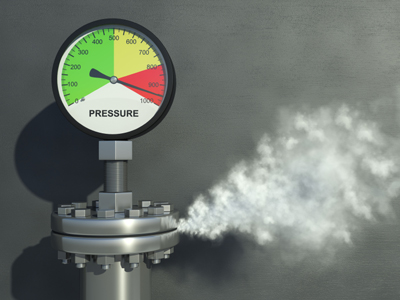There are certain industrial processes that students of high school Chemistry need to understand, one of which is the production of ammonia via the Haber process. This is the first of two quizzes to test your knowledge of the subject.
As you are no doubt aware from biology, plants require nitrogen for growth. This comes from the atmosphere but plants can't use it directly - it must be converted into nitrates that dissolve in groundwater which is then taken up by plants. This 'fixing' of nitrogen occurs naturally but only very slowly. For the natural world, that isn't a problem but for farmers growing crops, it is. A field of crops uses the nitrates faster than they are naturally replenished, which is why farmers use fertilizers.
Before the start of the 20th century, nitrates for use as fertilizers came mainly from South America where there were deposits of 'saltpeter' (sodium nitrate). Bird guano (droppings) from the sea birds in certain areas were also exported as fertilizers too. At the end of the 19th Century, it was realized that these deposits were unsustainable and so the race was on to find a method of making artificial fertilizers. This required nitric acid which is made from ammonia as well as ammonia itself, making the production of ammonia an extremely important process in the chemical industry.
The problem was that nitrogen is a very stable diatomic element. It is hard to get it to react with other elements without using extreme conditions. The first scientist to come up with a working method was the German drugstore Fritz Haber. In 1909, he used nitrogen and hydrogen, an iron catalyst, high temperature and high pressure to make a laboratory scale system that could produce about a liter of ammonia in something like 8 hours. He sold the system to a chemical manufacturer who gave the task of scaling up this method of ammonia production to an industrial scale to one of their engineers, Carl Bosch. He succeeded in 1910 and the process was named after its inventor - the Haber process. Sometimes you will see it called the Haber-Bosch process.
N2 + 3H2 ⇌ 2NH3
The exact conditions for the production of ammonia vary but are usually in the range of 150 - 250 atmospheres of pressure, 400 to 500oC with an iron catalyst. The reaction is reversible so even as ammonia is being made, it is also decomposing back to the original hydrogen and nitrogen. The high pressure increases the amount of ammonia made but building equipment to contain these pressures is expensive. High temperatures decrease the yield of ammonia but increase the speed of reaction. The conditions that are chosen are a compromise that produces the ammonia economically. The actual conversion rate of the nitrogen and hydrogen to ammonia in the Haber process is about 15 percent. This doesn't sound much but the other 85 percent of unreacted gasses are recycled and the ammonia is continually removed from the apparatus.
Ammonia from the Haber process has many other uses - making nitric acid which is then converted to nitrates to make explosives being one of them. Without the Haber process, it would have been very unlikely that Germany could have had the same capacity for making their weapons during World War I since most of the natural sources of nitrates at the time were under the control of British businesses.








